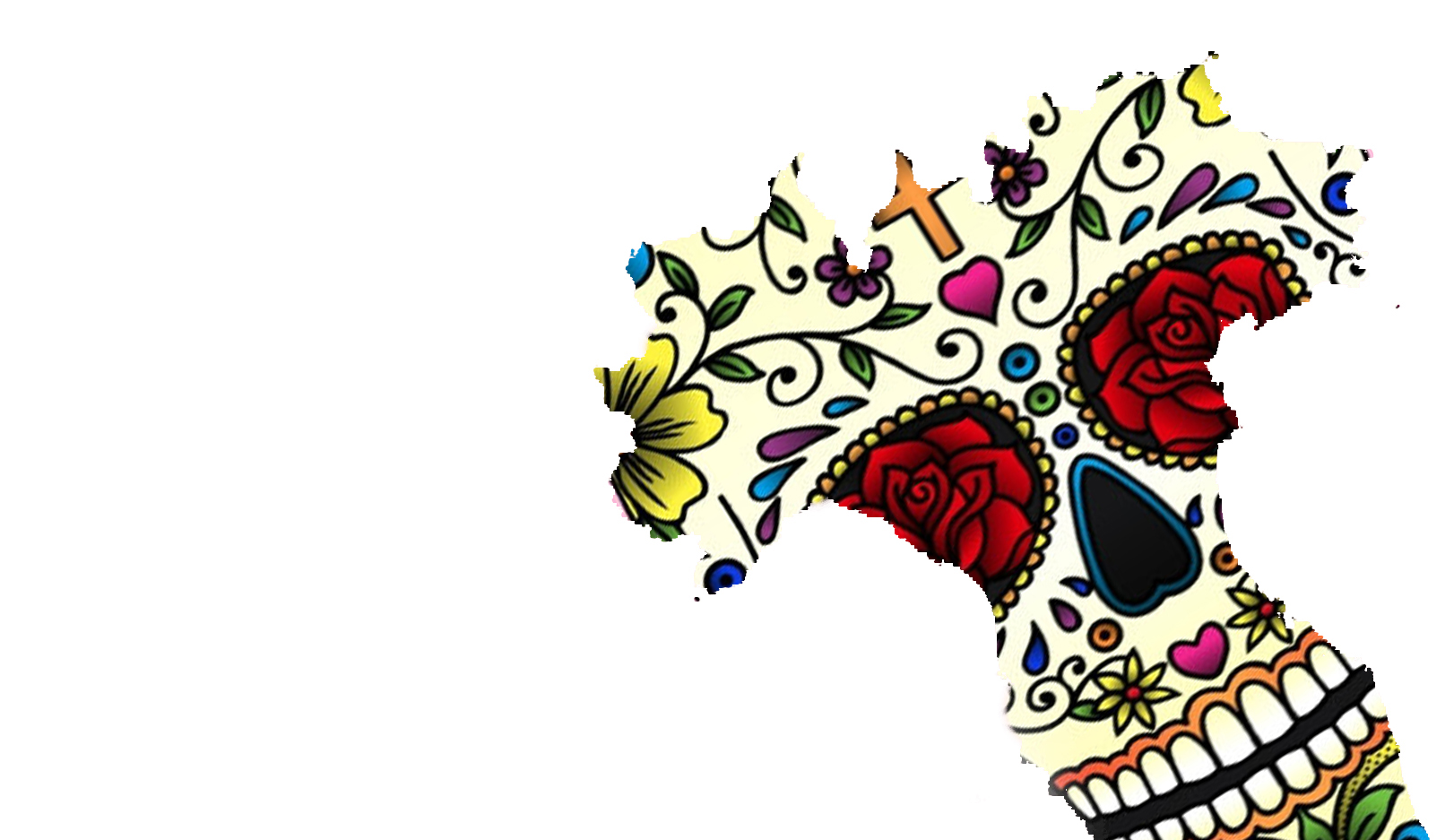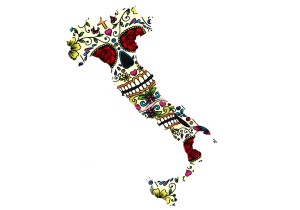For it is from this, the last harvest, all amber tree-line and pumpkin spice, the vigilant eye sees the imminent farewell.
The wintertime is a great nap for all of nature. Icy and fair, it is death.
People like death.
People fear it, sure. But watch the narratives that people tell one another. I mean the real, gripping sort that make the listener to remember something or change something. Redemption and tragedy, people love stories about the end. And they’re fervently about the business of remembering what has ended, and that what has not, will soon.
Halloween takes place by night. Traditionally, it has had something to do with strictly pagan and strictly Christian ideas. Strictly spiritual, in all, having to do with death, the dying and dead.
As long as there are people involved, there’s been a sort of celebration about that. It’s a global trend. Here are a few examples.
From Mexico, El Dia de los Muertos is like All Saints Day for the commoner. Celebrators use the first day of November to remember their deceased loved ones. Typically there’s special food involved, music and pictures — all of which form an experience unique to life of the departed.
Mark Arnold, executive director of the Art Center of Waco, is putting together a Dia de los Muertos celebration for the community.
He said the cultural holiday came from religion.
“We know the old expression ‘laughter through tears,’” he said. “I think Dia de los Muertos is a little like that. We’re taught at a very young age to mourn for death. But we forget the happiness our loved ones brought to our lives.”
There are also a number of traditional, holiday-specific novelty pastries. Children, even adults decorate sugar skulls and cookies baked in the shape of skeletons for the festivities.
“It’s a way to celebrate the people we loved,” Arnold said.
For many, the day is not complete without a trip to the gravesite. Morbid? To some, perhaps, but Dia de los Muertos is about making a good experience, a party, from memories of someone who lived a good life. At certain cemeteries, it’s not uncommon to find headstones decorated with things a person enjoyed in his or her life.
Italian families often observe a similar day to remember, the second day in November.
Dr. Roberto Pesce, a lecturer in Italian, is from Venice.
“We do not really celebrate Halloween,” he said. “But it’s imported. It’s more a way for adults to have a party. Even then it’s not for the kids or even about being scary.”
Giorno Dei Morti is the Italian day of the dead. Pesce said people have big dinners with their families to remember the people they loved.
“We go to church and pray for our dead,” he said. Many in the country, where Catholicism is a very prominent fixture of life, visit the cemetery and attend a special mass at the local church.
Afterwards, Pesce said, Italian families have big dinners with toasts to the people they loved and conversation about what made their lives special.
“When you start learning about different religions, you see a lot of similarities,” Yuko Prefume, lecturer in Japanese, said.
In Japan, candles take to the Aug. 15 night sky. Illumining colored paper lanterns and incense lead the dearly-departed to a festive, weeklong homecoming. It’s a magnificent sight. It’s Obon.
“One day in August, the dead are supposed to come back,” Prefume said. It’s an old Buddhist idea that’s become part of Japanese tradition.
Many make a special effort to remember their family, friends and beloved of the community who have died. To honor their memory, they leave a trinket or a snack on the household altar. It’s a welcoming gesture.
When the Lunar calendar indicates Aug. 15, Dr. Xin Wang, associate professor of Chinese, said people in China have a holiday.
“It’s a family reunion. It’s like thanksgiving,” Wang said.
That day, people make a special effort to be with their families. Together, with their still-living loved ones, they share a meal and have tea and moon cake.
“The belief behind it is to remember even though we’re at different places, we are under the same moon,” he said.
It’s easy enough to make a comically grotesque event of remembering the dead. But for a globe of people, despite their world of difference, everyone may agree on this. Death is a part of life. And the living are only the more alive for remembering those who lived good lives.







